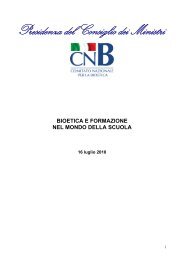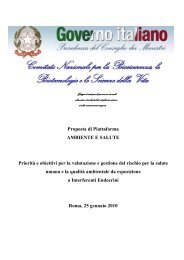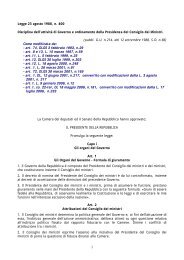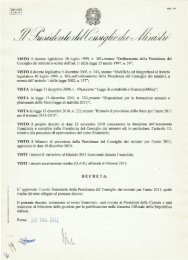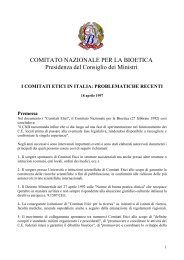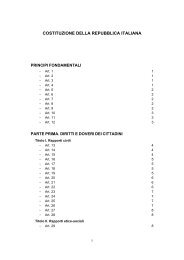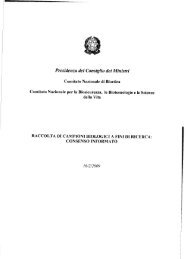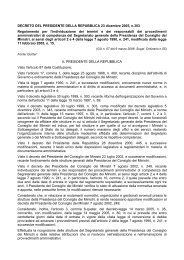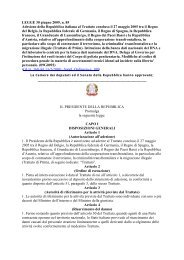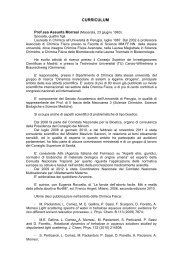President
President
President
You also want an ePaper? Increase the reach of your titles
YUMPU automatically turns print PDFs into web optimized ePapers that Google loves.
) any other process that starts the organised development of a biological<br />
entity with a human nuclear genome, or a modified human nuclear genome,<br />
who have the potential capability of developing at least to the stage in which<br />
the primitive streak appears.<br />
This definition tries to take into account the categories that represent the<br />
various stages of development, the structure’s potential capabilities and the<br />
origin of the DNA, which contributes to the formation of the new individual.<br />
Findlay admits that there can be confused and anomalous situations, like the<br />
possibility of defining as embryo an entity who has formed by natural<br />
fertilisation and then lacks the potential capability of continuing in his<br />
development, whilst a similar entity artificially created might not deserve this<br />
definition. On the other hand, Findlay observes, there’s no doubt that the<br />
definition of embryo must be given by rights to a human oocyte fertilised by a<br />
human nemasperm, regardless of his potential development capabilities.<br />
On this considerations is based the second argument, relative to the<br />
definition of “beginning of personal human life”, which seems indispensable for<br />
the purpose of establishing whether personal dignity can or cannot be<br />
recognised to the various entities to which we intend to attribute that definition.<br />
If, for example, we accept the definition of “beginning of personal life”<br />
presented by the supporters of relational personalism, which favours the<br />
implantation into the uterus as condition of relational subjectivity, the<br />
conclusions regarding the level of dignity to be recognised to cytoplasmic<br />
hybrids would be very different from those presented by the previous bioethical<br />
evaluations.<br />
This hypothesis of a personal life that begins with the implantation of the<br />
embryo in the uterus is at the basis of a third form of personalism (the other two<br />
are those defined as functionalist personalism and substantialist personalism),<br />
which does not attribute to biology or to functional services the person’s<br />
diriment character. This personalism, defined as “relational”, links the dignity of<br />
life to the context of relations of which it’s part and to the project of life it<br />
expresses. At the end of its nesting within the uterus (14 th day) the embryo<br />
establishes the cellular communications with the maternal organism and at the<br />
same time, within it, the beginning of the differentiation between embryonic<br />
component and extra-embryonic component takes place. From that moment<br />
the embryo is no longer a guest in the uterus, but he/she is intimately<br />
connected to the maternal tissues, a bond that is not only biological, but leads<br />
to an intense relationship of communication and from which starts a project of<br />
life based on that relationship. In other words, the relationship with the mother<br />
is defined and the one with the outside world is clarified: the embryo becomes a<br />
being-in-relation. In this way his/her identity in the relationship becomes a<br />
significant element, which the embryo did not have before the nesting.<br />
According to the supporters of this particular form of personalism, the<br />
relationships represent a summative and qualifying anthropological trait, where<br />
biology is, anthropologically, necessary but insufficient and the functions are<br />
important but not crucial. A further consequence is that the embryo cannot be<br />
considered apart from his/her project of life and context: the implantation into<br />
the uterus signals the passage from a phase in which the embryos don’t have a<br />
configuration of relationship that is significantly human and can be used (for<br />
example in scientific research) with vigilance and caution, to a phase in which<br />
they have an established configuration of relationship and must therefore have<br />
a different kind of protection. Beyond the mere biological fact, the recognition of<br />
35




